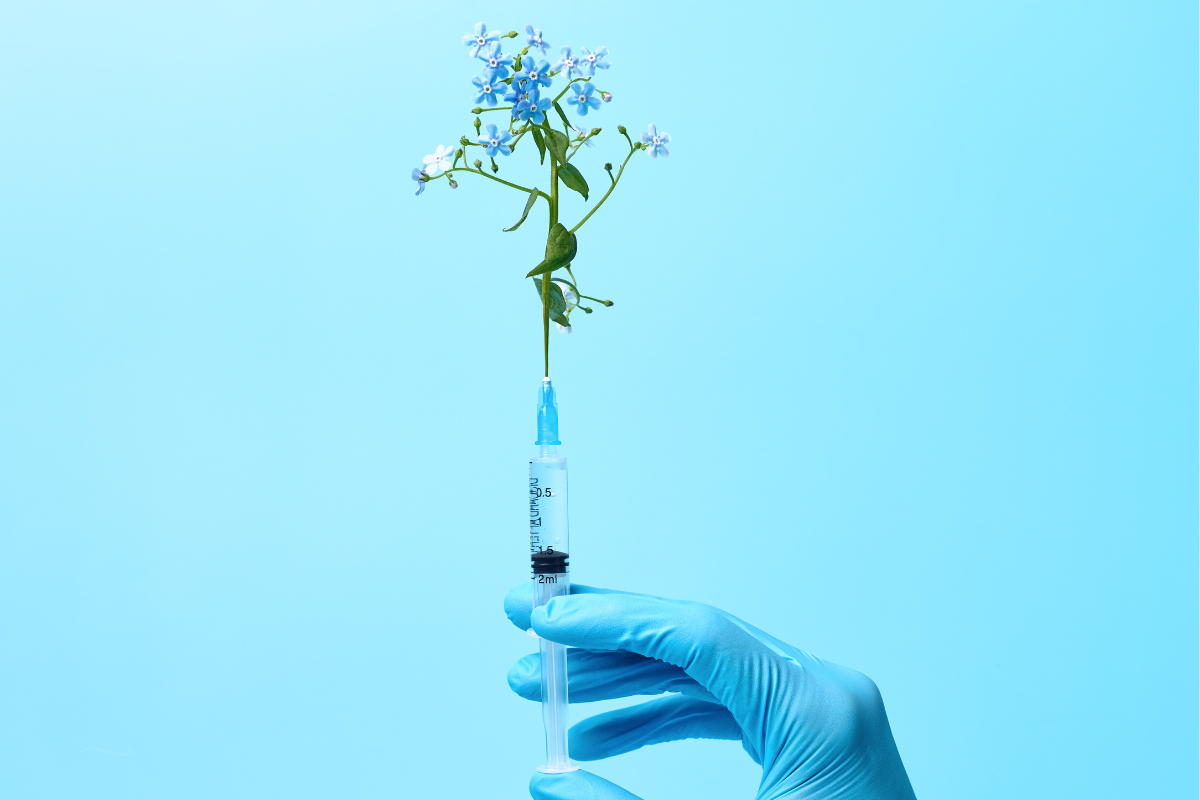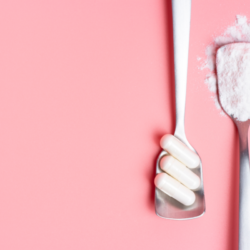Glycation is a natural process in which sugars bind to proteins or lipids without the action of enzymes. This phenomenon contributes to skin ageing and various chronic diseases. Recently,rosmarinic acid, a phenolic compound found in a number of culinary herbs such as rosemary and basil, has attracted attention for its anti-ageing and deglycating properties.
What is glycation?
Glycation is a non-enzymatic chemical reaction between sugars and proteins, lipids or nucleic acids. This reaction forms advanced glycation end products (AGEs), which are implicated in ageing and degenerative diseases.
What is rosmarinic acid?
This component is a natural polyphenol widely recognised for its powerful antioxidant and anti-inflammatory properties. It is found in abundance in culinary herbs such as rosemary, basil, peppermint and sage. These plants, which have been used for centuries in traditional medicine, are now being studied for their many health benefits.
What is the mechanism of action of rosmarinic acid?
This extract exerts its effect by inhibiting the formation of advanced glycation end products (AGEs), which are harmful compounds formed when sugars bind to proteins or lipids. It neutralises free radicals, unstable molecules that damage cells, and modifies sugar metabolism to prevent the formation of AGEs. It has also been shown to break down AGEs that have already formed, helping to reverse the damage caused by glycation.
Anti-ageing effects of rosmarinic acid
Rosmarinic acid’s anti-ageing effects are mainly due to its antioxidant and anti-inflammatory properties. By reducing oxidative stress and inflammation, it protects cells from damage and maintains skinelasticity and firmness. Studies have shown that it improves the production of collagen and elastin, two proteins essential for young, healthy skin. This helps to reduce wrinkles and improve skin texture.
How can glycation be slowed down?
Several studies have demonstrated the effectiveness of rosmarinic acid in preventing and reversing glycation. Here is a detailed overview of some notable research:
- Animal model study: A study published in the Journal of Medicinal Food showed that rosmarinic acid significantly reduced levels of advanced glycation end products (AGEs) in animal models. The results showed a reduction of more than 50% in AGEs, suggesting a strong capacity for this acid to prevent the formation of AGEs and protect tissues against glycation-related damage.
- In vitro research: One study examined the effect of rosmarinic acid on the formation of AGEs in a serum albumin-bovine/glucose model. The researchers found that rosmarinic acid, at a concentration of 400 µg/mL, inhibited the formation of AGEs by more than 90% (Cambridge). This underlines the potential efficacy of rosmarinic acid as an antiglycating agent.
- Skin elasticity study: Another study, published in Phytotherapy Research, found that rosmarinic acid improved skin elasticity and reduced wrinkles in human participants. Subjects who used a cream containing rosmarinic acid for 12 weeks showed a significant improvement in the texture and firmness of their skin, as well as a marked reduction in wrinkles (Cambridge).
- Neuroprotective effects: An additional study explored the effects of rosmarinic acid on cognitive impairment and neuroprotection. Published in the Journal of Basic and Clinical Pathophysiology, this research showed that rosmarinic acid could reduce memory problems and protect neurons against oxidative stress, a key factor in the development of complications due to glycation (Cambridge).
- Clinical study: A clinical study also confirmed the benefits of rosmarinic acid in patients suffering from type 2 diabetes, a condition in which glycation plays a major role. The results showed a significant reduction in glycation markers and an improvement in insulin sensitivity in participants treated with rosmarinic acid (Cambridge).
- Practical use and recommendations
To benefit from the anti-ageing and glycation-reducing effects of rosmarinic acid, we recommend incorporating herbs rich in rosmarinic acid into the daily diet or using dietary supplements containing rosemary extract.
Where can I buy cheap rosmarinic acid?
Rosmarinic acid is found mainly in herbs belonging to the Lamiaceae family. Here are some of the richest sources:
- Rosemary (Rosmarinus officinalis): Commonly used as a culinary spice, rosemary is one of the most abundant sources of rosmarinic acid. It is also used in phytotherapy for its medicinal properties.
- Basil (Ocimum basilicum): A popular herb in Mediterranean cuisine, basil contains rosmarinic acid in significant quantities, particularly in its leaves.
- Peppermint (Mentha piperita): Known for its refreshing and digestive properties, peppermint is also a good source of rosmarinic acid.
For those seeking a higher concentration of rosmarinic acid, food supplements and herbal extracts may be a practical option.
These products are available in various forms, such as capsules, ampoules, powders and tinctures, and can be found in pharmacies, health food shops and online.
Sources
- Direct proof of the deglycating effect of rosmarinic acid on a glycated protein
- Rosemary Leaf Extract Inhibits Glycation, Breast Cancer Proliferation, and Diabetes Risks
- RA inhibits DNA glycation and modulates the expression of Akt1 and Akt3 partially in the hippocampus of diabetic rats
- Advanced Glycation End-Products and Diabetic Neuropathy of the Retina





